Nooten
A solution for TV production


At Mountains, I collaborated with the CTO to redesign and launch Nooten, a new digital solution to streamline the manual process in unscripted TV production.
Definition
Personas
User flows
Customer experience
Value Proposition
Lean Canvas
Discovery
Our team
Getting context
Stakeholder map
Ecosystem map
Sitemap
Market research
Beta users
User profiles
Nooten (as is)
Call sheet (as is)
User interviews
User journeys
Prioritization
Research insights
Delivery
Wireframes
Prototypes
Website study
Validation
Impact
User testing
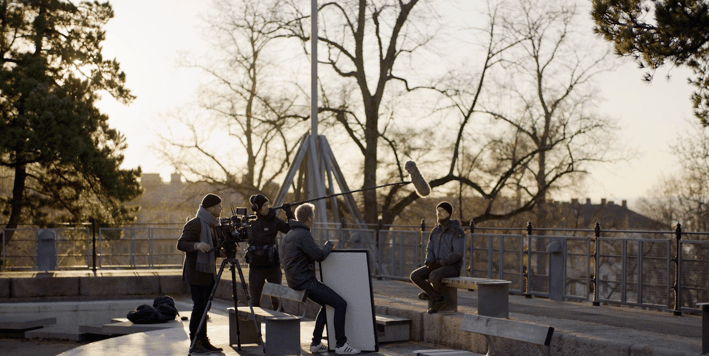

Discovery
Our team
Our founder and executive team are industry experts who have personally faced many problems and needs in their daily production routines.
This expertise was extremely valuable in knowledge terms, although a professional protocol was essential to avoid biases in the solution's design.
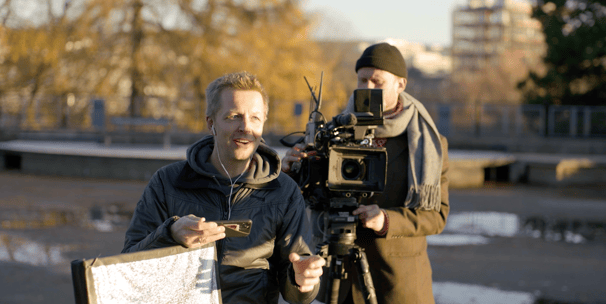

Stakeholder map
Mapping stakeholders clarified team roles and their contributions to product development.
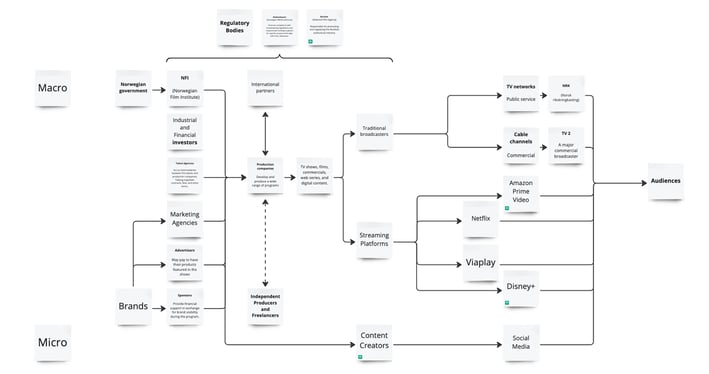

Ecosystem map
Mapping the ecosystem provided a clear view of value exchange relationships in the market from both micro and macro perspectives.
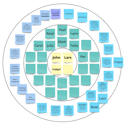

Sitemap
The sitemap was crucial for understanding the existing structure and initiating user flow optimization.
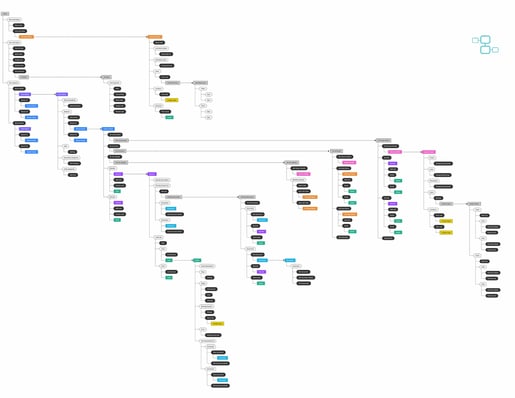

Market research
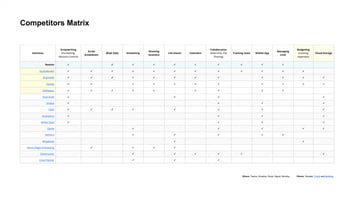

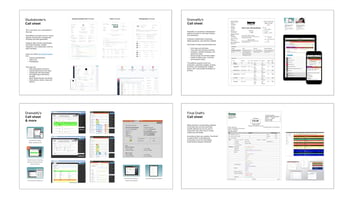

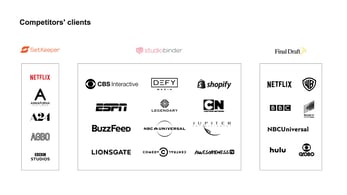

Checking out the existing solutions helped me understand what was on offer as alternative options.
I also mapped some productions and client profiles, focusing on our niche in unscripted productions.
It became clear that most callsheets prioritized print-ready formats over digital.
I analyzed key features across competitors' tools to identify those most valuable in our context.
Beta users
As the first beta users, we had a strategic production shoot by one of our technical experts. The Norwegian reality show Kompani Lauritzen features celebrities in military-themed competitions who develop their skills and entertain the Norwegian audience.


The scale and complexity of the project became clearer, as not just one, but several user profiles would be directly and indirectly impacted.
User profiles
Most of the users and roles have been labeled in order to have access and permissions clearly defined.
Primary and secondary users such as editors and viewers would change according to the product modules.
While Nooten Plan (module 1) focuses on coordinators and managers, Nooten Capture (module 2) has directors and post-editors as its main users.
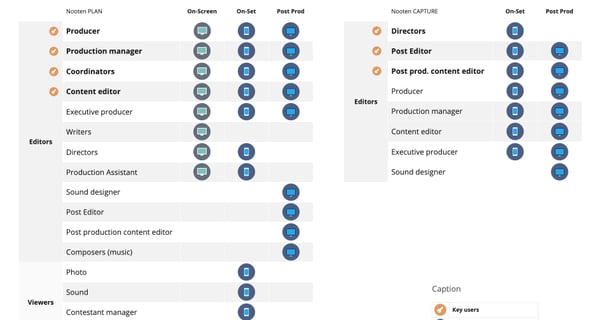





Nooten state
So far we've been dealing with the pre-production module, which would involve functionalities aimed at all planning activities during pre-production, such as creating and sharing callsheets, documents, and tasks.
From the start, Nooten's digital callsheet was a key competitive advantage in the market.
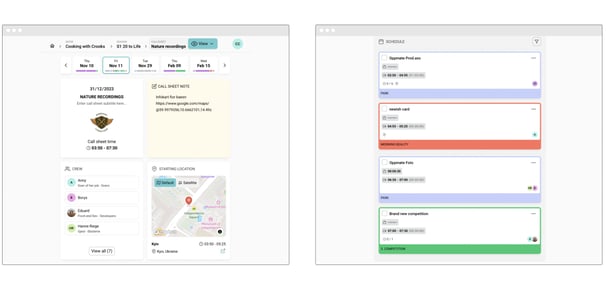

Escope
At that point, Nooten was only available as a web concept without mobile responsiveness, so the initial job was to adapt it for mobile.
Call sheet (as is)
Analyzing the original Excel-based callsheet templates helped me grasp their core content, structure, color coding, and the logic behind this established industry practice.
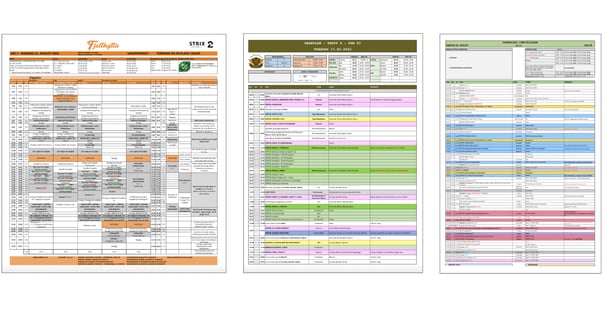

One of the most enriching aspects of the project was gaining insight into the entire scenario from the users' perspective.
User interviews
For Nooten Plan's first module, we identified Coordinators and Managers as the primary users, focusing on planning and pre-production.
After creating a semi-structured interview script and running a pilot with one of our experts, I conducted several interviews with industry coordinators and managers.
Qualitative research analysis tools such as Marvin streamlined the process of consolidating and organizing insights, in addition to serving as a legacy and source of knowledge for the entire team.
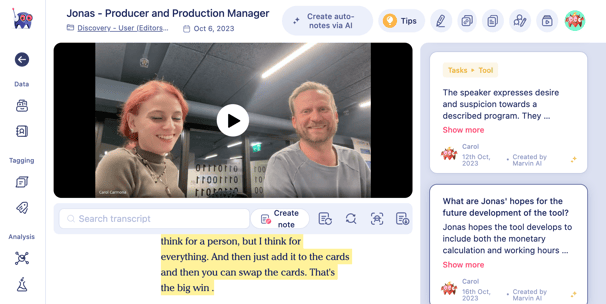

User journeys
A process map and user journey were combined to provide a suitable resource and cover the scriptless production landscape.


With our experts' know-how of the process and especially with the users' feedback,
I was able to compile this overview and present all the problems mentioned and associated opportunities.


With so much information collected, making the right connections and filters was crucial to highlighting what would be most latent, relevant, and valued by users.
Prioritization
We grouped problems by affinity and prioritized them into waves for medium- and long-term implementation.
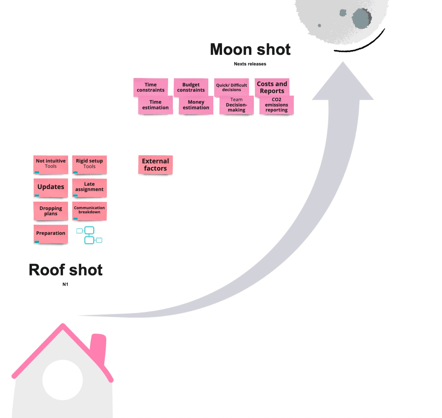

We found that users were expecting a budget feature, which had not been included yet.
After some analysis and design review, we created a plan addressing most user issues and expectations in the future.


Research insights
User quotes provided clear evidence of their needs.
Eventually, the team realized that even with years and years of experience, research at this level brought up blind spots that they had never known about, and they valued even more the design as a process.
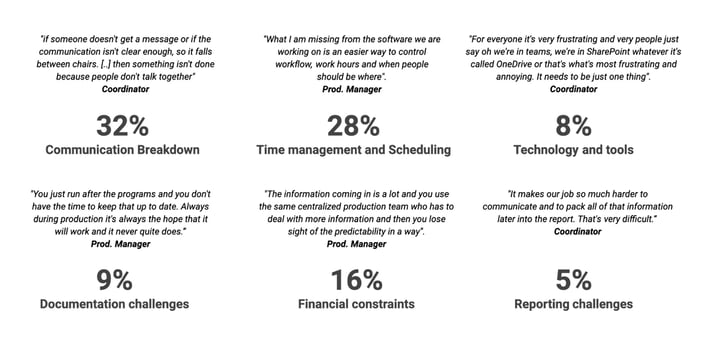

Although budgeting seemed minor, it was crucial to a key decision-maker, the manager, whose influence would significantly impact the product's adoption.
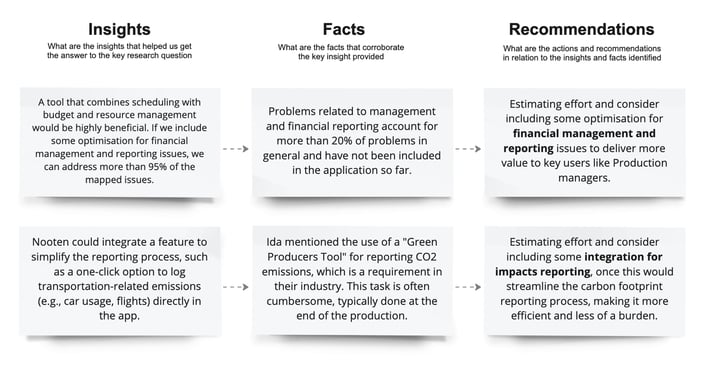

Defining
Personas
Personas and their flows were essential for improving the experience and usability of Nooten.
The first personas were created from the inputs obtained from the research, reflecting to the team archetypes that reflect the user profile's characteristics.
The idea was to facilitate the learning curve for everyone and future team members with high-quality knowledge.
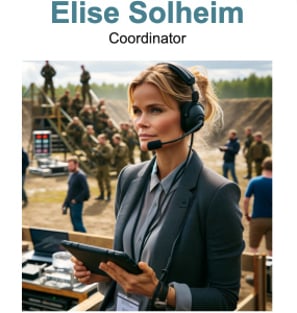

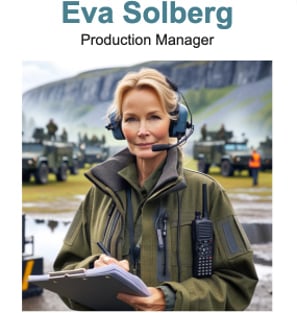

User flows
Each Nooten module's respective flow was designed according to the users' needs, the first being the Nooten Plan.
Nooten Plan focus users: Coordinator, production manager, and all crew members.
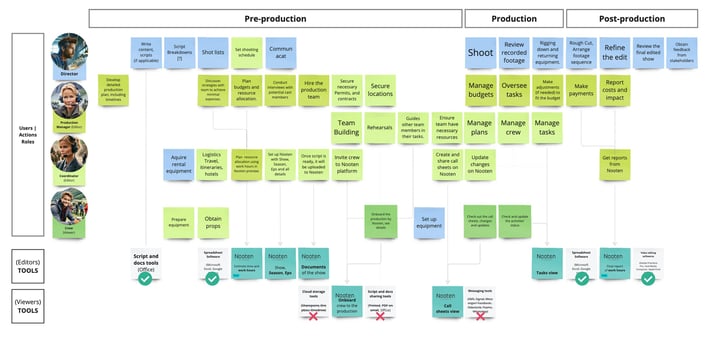




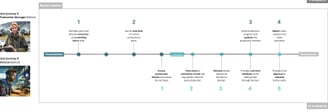




Nooten's second module centered on capturing and organizing creative insights.
This is a specific module for pre-production planning.
Nooten Capture focus users: Directors and Post-production editors.
Customer experience
The customer journey was considered as a whole, taking into account the initial information set up in the software, either by a technical professional from the company or by a user customer.
Screen by screen, the whole onboarding was reviewed in a search for the best alternative.
Not only screens and flows but studies related to several onboarding practices have been carried out.


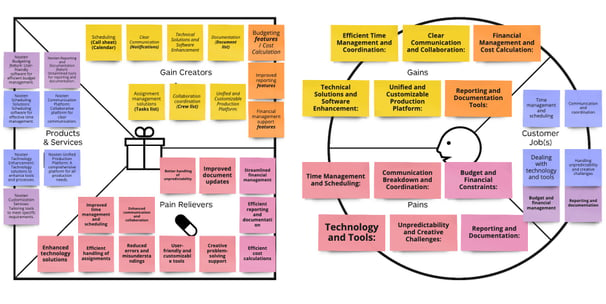

Value Proposition
With the user dive and journeys definition the value proposition became clearer.
Lean Canvas
Other business model aspects could be better assessed according to the delivery of value.
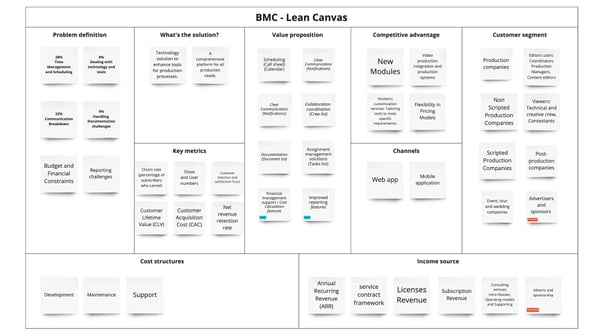

Delivery
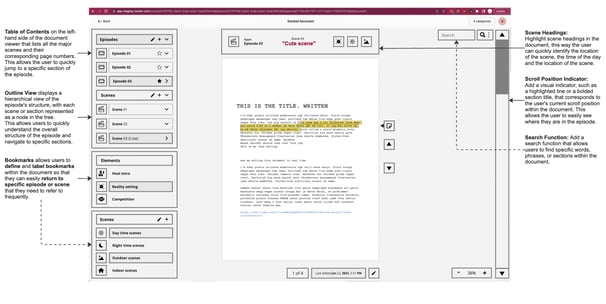

Wireframes
I've often used wireframes to sketch out ideas for new features.
Prototypes
Once aligned with the team, higher fidelity prototypes were designed to illustrate the overall final product layout. Onboarding study:
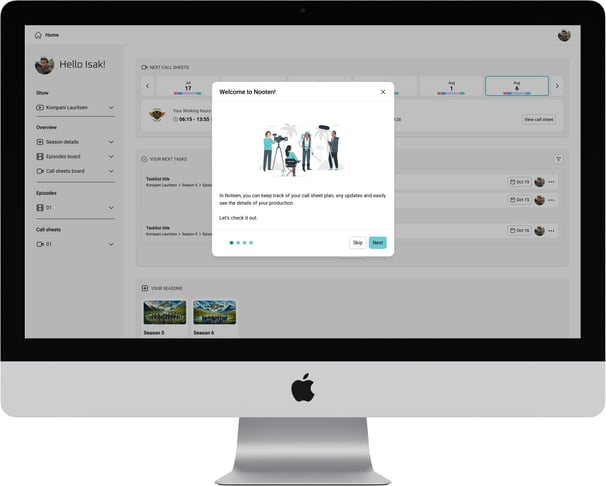



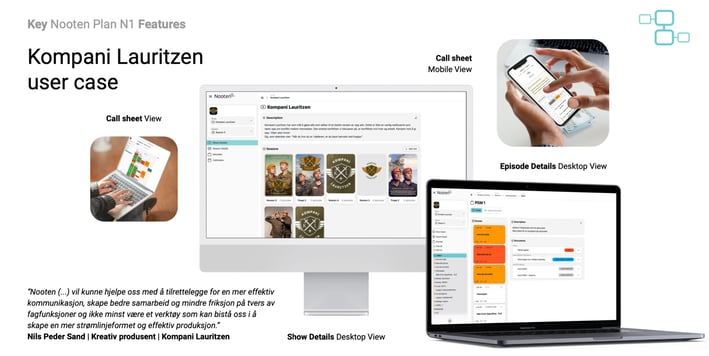

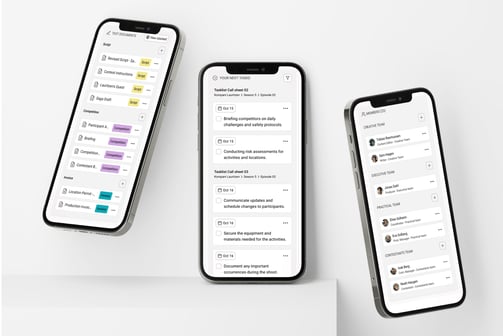

Impact
Workflow optimization
Nooten can change the manual process of scriptless TV production, simplifying workflows.


Real-time updates
It can replace outdated Excel-based methods with a digital solution, allowing real-time updates.
User-centered research has enabled key features such as budget and time management
User-centered




Website Study
In addition to the platform, we were also studying building a website to showcase Nooten to the industry.
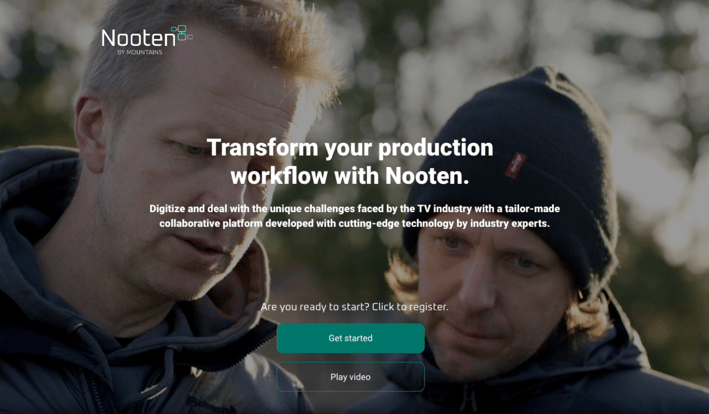

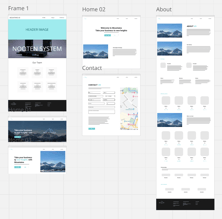

Validate
User testing
Finally, still in development, the flows and screens were presented to strategic partner users for feedback and conceptual validation.
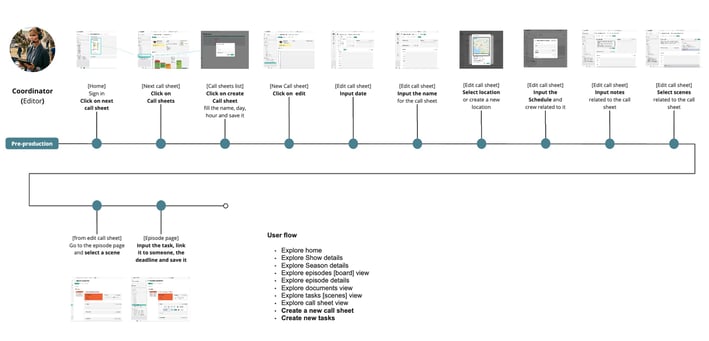



I'd be glad to share more details or answer any questions you may have. 🤗
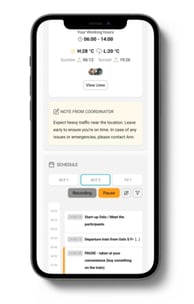

Final comments
Without a doubt, this was a challenging project with many constraints in terms of resources and external factors.
The collaborative, user-centered approach led to a solution that not only improved usability but also positioned Nooten as a competitive tool in the industry.
